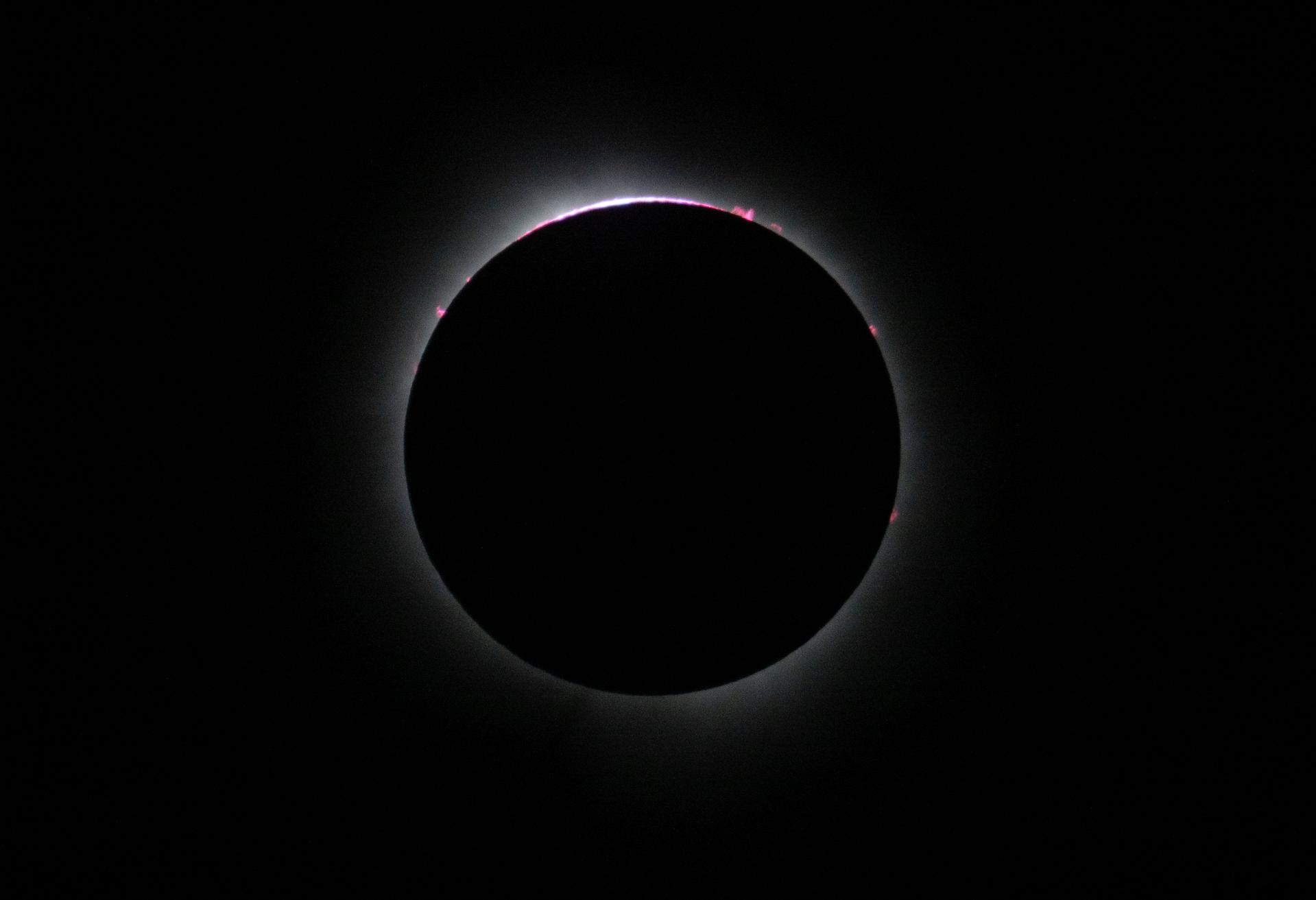
The Full Experience: NASA, Marshall, and Arkansas Celebrate Total Solar Eclipse
By Celine Smith
More than 100,000 people from across the world gathered April 8 in Russellville, Arkansas, to witness an astronomical syzygy - the alignment of the Sun, Moon, and Earth - creating a solar eclipse with totality lasting 4 minutes and 12 seconds.
Team members from NASA's Marshall Space Flight Center and others traveled to Arkansas to provide educational opportunities related to the eclipse. Experts from NASA's Stennis Space Center, Kennedy Space Center, and NASA Headquarters, along with representatives of the Arkansas Air National Guard and the Paris Observatory in Muedon, France, joined the Marshall team.

"I've conducted outreach before, but nothing on this scale," said Patrick Koehn, heliophysics research and analysis lead at NASA Headquarters. "The logistics were on another level, it was impressive to see it come together, and I'm thrilled we engaged so many people."
In the days leading up to the eclipse, NASA hosted exhibits and outreach activities for the public and gave presentations for students at Arkansas Tech University and the Russellville School District. Visitors were also given an opportunity to meet retired NASA astronaut Mike Massimino, who signed autographs and greeted the crowds.
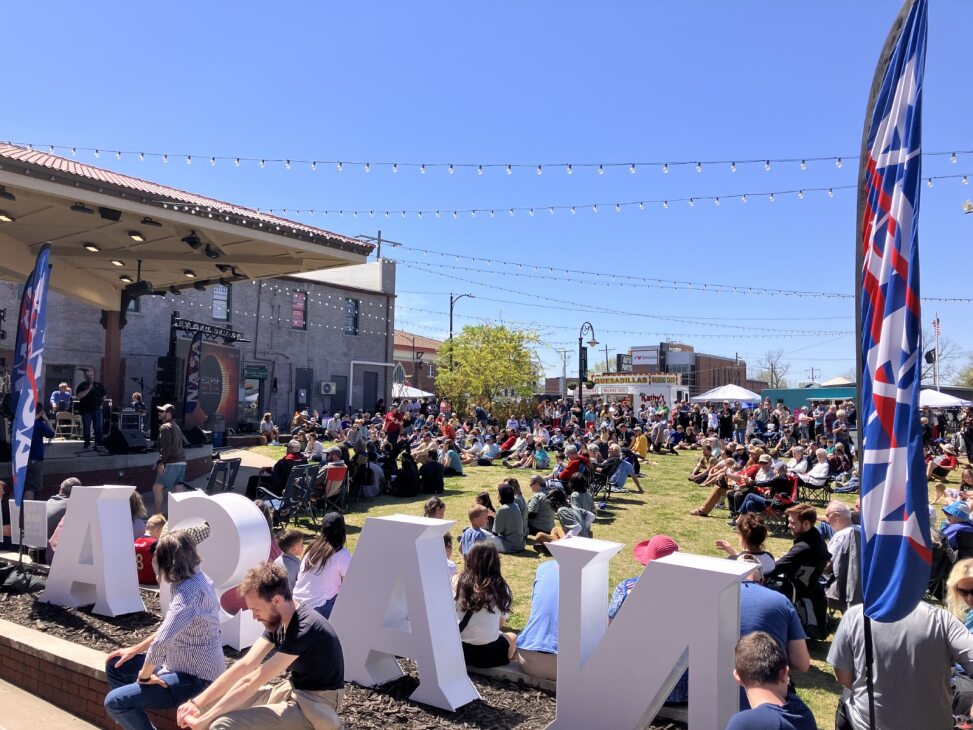
Marshall Center Director Joseph Pelfrey also attended this celestial experience, giving remarks at the Russellville watch party about the eclipse and the work of Marshall's Heliophysics and Planetary Science Branch.
"Thanks to our collaboration with the city of Russellville, we helped host one of the agency's most successful eclipse events," Pelfrey said. "People came from across the nation and the world to share the experience with us. It was incredible to witness my first total solar eclipse alongside the Marshall team in Arkansas."
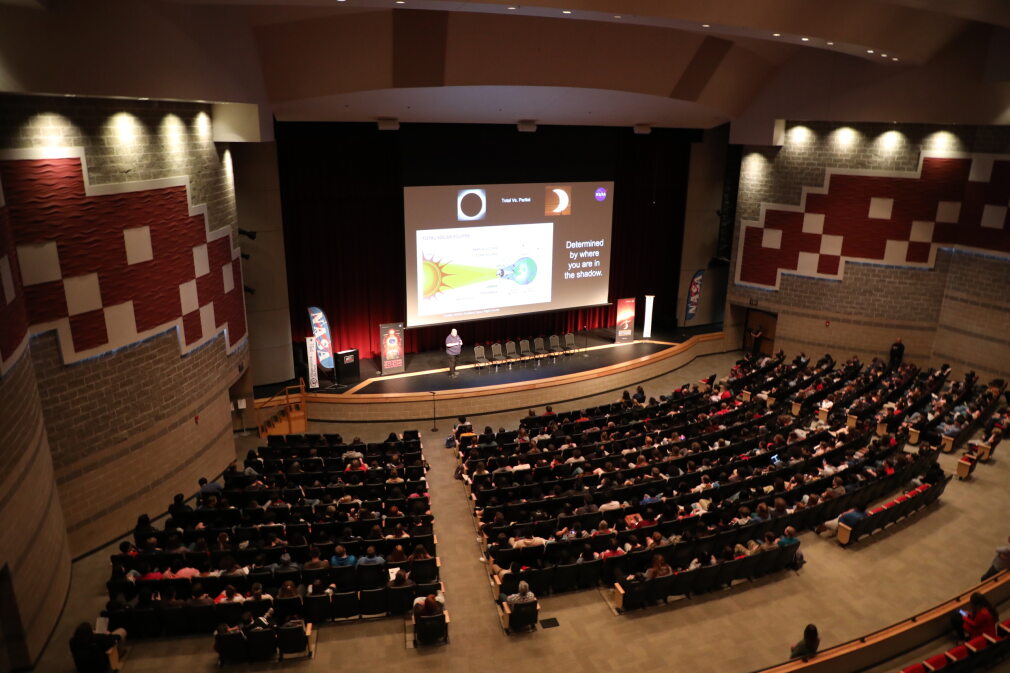
Russellville was one of the cities featured in NASA's live eclipse broadcast, 2024 Total Solar Eclipse: Through the Eyes of NASA. The three-hour broadcast covered the path of the eclipse across 15 states, from Texas to Maine, garnering more than one million live viewers. Currently, the broadcast has more than 13 million views. Russellville was noted for its clear skies, providing spectators with one of the most visible sightings of the eclipse.
The 2024 solar eclipse was especially spectacular due to the prominences visible during totality. Solar protected cameras captured the fiery red arcs around the edge of the Moon and Sun.
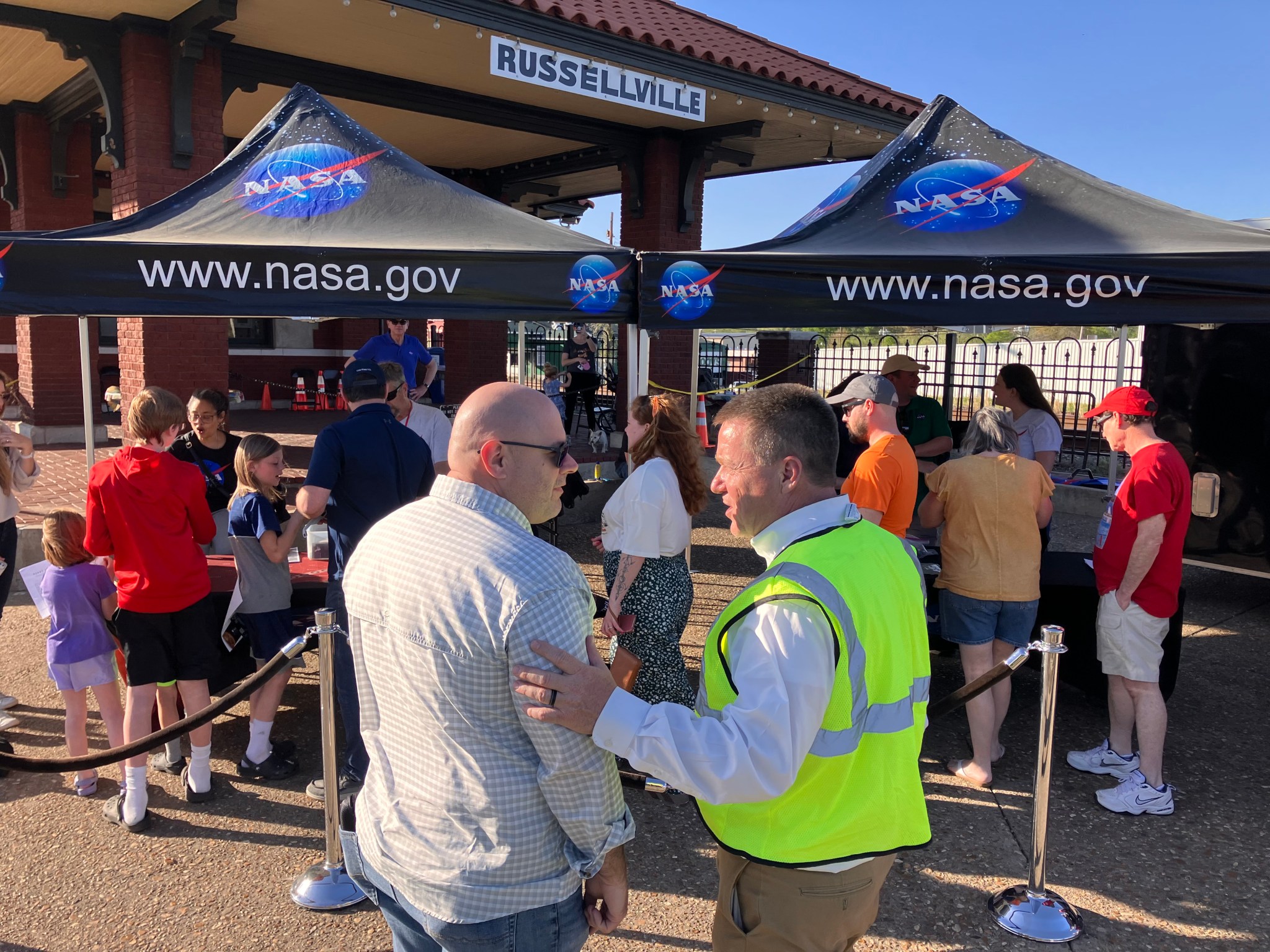
"This was my first total solar eclipse, and it was an awesome experience," said Bob Loper, research astrophysicist at Marshall. "It was incredible to see phenomena I've spent my career studying - actually seeing solar prominences of the Sun was an experience I'll never forget."
View more photos of the April 8 eclipse from NASA.
Smith, a Media Fusion employee, supports the Marshall Office of Communications.
Chad Summers Named Director of Test Laboratory for Marshall's Engineering Directorate
Chad Summers has been named as the director of the Test Laboratory for the Engineering Directorate at NASA's Marshall Space Flight Center, effective April 21.
An integral part of the Engineering Directorate, the Test Laboratory encompasses a wide range of specialized capabilities NASA uses to conduct testing for space flight hardware research, development, qualification, acceptance, and anomaly resolution. As director, Summers will provide executive leadership for all aspects of the Laboratory, including workforce, budget, infrastructure, and operations for testing.
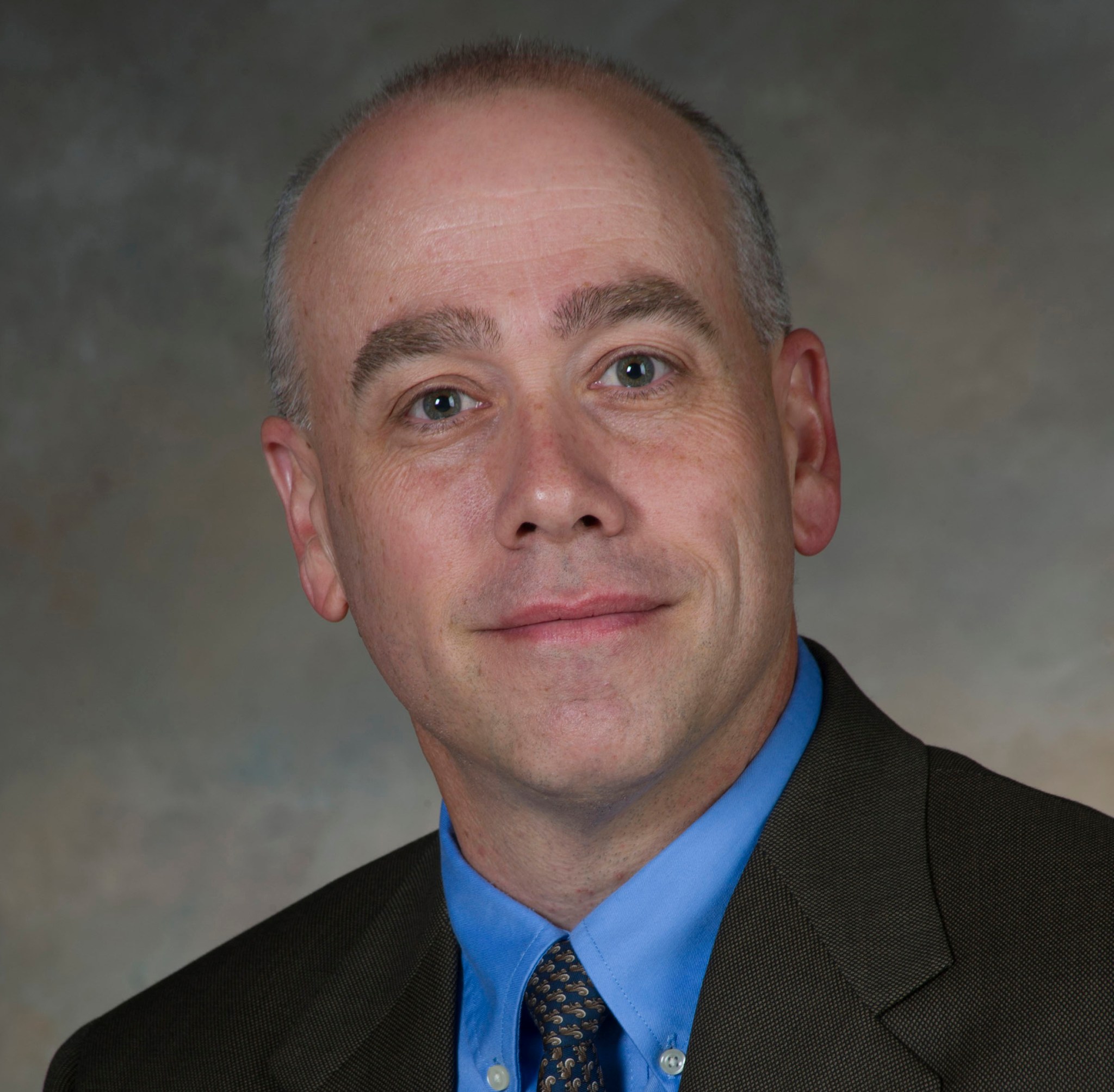
Summers has been the chief of the Structural Design and Analysis Division at Marshall since 2019. In that role, he supervised a division of civil service and contractor engineers to assure the successful design, development, and integration of large, complex launch vehicles and spacecraft systems to meet NASA's Human Exploration and Science Mission objectives. From 2018 to 2019, Summers was the division's deputy chief.
From 2015 to 2018, he was chief of the Systems Requirements and Verification branch. Summers led the Systems Design and Definition branch from 2011 to 2015. From 2007 to 2011, he was chief of the Systems Requirements, Interfaces, and Verification branch. Summers was deputy chief of the Engine Systems and Main Propulsion Systems branch from 2004 to 2007.
Summers has almost 30 years of experience at NASA and worked at both Kennedy Space Center and Stennis Space Center prior to coming to Marshall in 2001 as a test operations manager in the Next Generation Launch Technology Project Office.
He has received several of the agency's highest awards, including NASA's Outstanding Leadership Medal, Exceptional Service Medal, Marshall Director's Commendation, and multiple Group Achievement and Special Service awards.
A native of Titusville, Florida, Summers received his bachelor's degree in mechanical engineering from the University of Central Florida. He lives in Huntsville with his wife, Jennifer.
Public Invited to NASA's 30th Anniversary of International Rover Competition
NASA will celebrate the 30th anniversary of the Human Exploration Rover Challenge when the competition returns to the U.S. Space & Rocket Center's Aviation Challenge Course in Huntsville April 19-20. The event is free and open to the public with rover excursions occurring each day from 7:30 a.m. to 3 p.m. or until the last rover completes the obstacle course.
NASA selected 72 student teams in October to begin an engineering design challenge to build human-powered rovers that will compete at the course near the agency's Marshall Space Flight Center.
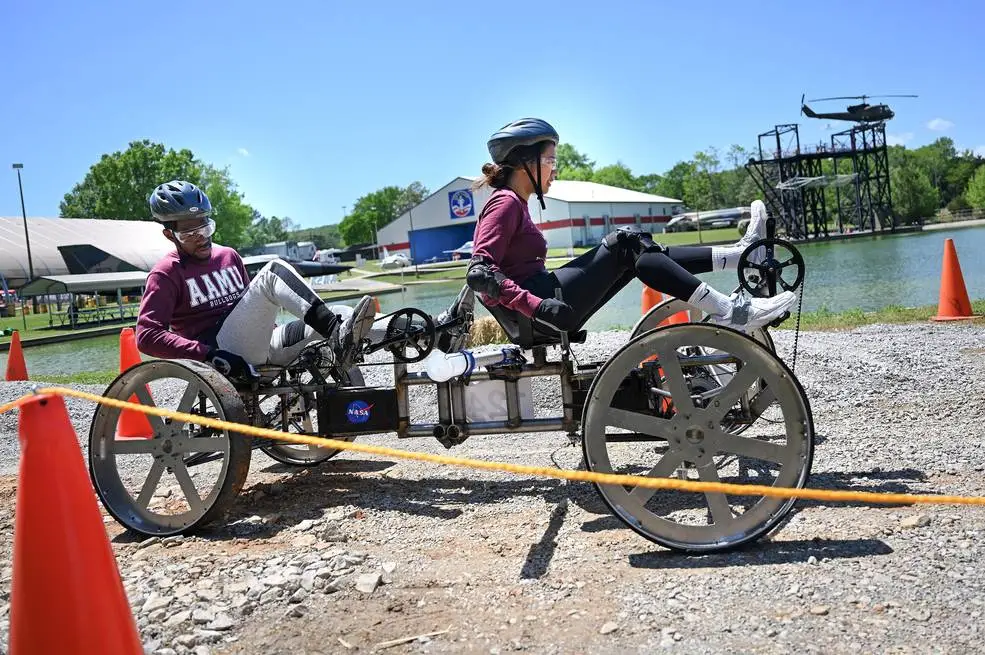
The public is invited to watch more than 600 students from around the world attempt to navigate a complex obstacle course by piloting a human-powered vehicle of their own design and production.
Participating teams represent 42 colleges and universities and 30 high schools from 24 states, the District of Columbia, Puerto Rico, and 13 other nations from around the world. NASA's handbook has complete proposal guidelines and task challenges.
To conclude the 2024 season, NASA will host an in-person awards ceremony April 20 at 5 p.m. inside the Space Camp Operations Center at the rocket center. NASA and industry representatives will present multiple awards highlighting team successes throughout the past eight-month-long engineering design project, including awards for best rover design, best pit crew award, best social media presence, and many other accomplishments.
The Human Exploration Rover Challenge tasks high school, college, and university students around the world to design, build, and test their lightweight, human-powered rovers on a course simulating lunar and Martian terrain, all while completing mission-focused science tasks. Eligible teams compete to be among the top three finishers in their divisions, and to win awards for best vehicle design, best rookie team, and more.
The challenge annually draws hundreds of students from around the world and reflects the goals of NASA's Artemis campaign, which will land the first woman and first person of color on the Moon.
The event was launched in 1994 as the NASA Great Moonbuggy Race - a collegiate competition to commemorate the 25th anniversary of the Apollo 11 lunar landing. It expanded in 1996 to include high school teams, evolving again in 2014 into the NASA Human Exploration Rover Challenge. Since its inception, more than 15,000 students have participated. Many former competitors now work in the aerospace industry, including with NASA.
The Human Exploration Rover Challenge is managed by NASA's Southeast Regional Office of STEM Engagement at Marshall and is one of eight Artemis Student Challenges. NASA's Office of STEM Engagement uses challenges and competitions to further the agency's goal of encouraging students to pursue degrees and careers in science, technology, engineering, and mathematics.
First-of-its-kind SLS Payload Adapter Finishes Assembly at Marshall
Teams at NASA's Marshall Space Flight Center completed a new payload adapter test article and readied it for structural testing, set to begin later this spring. This marks a critical milestone on the journey to the hardware's debut on the upgraded Block 1B configuration of NASA's SLS (Space Launch System) rocket with Artemis IV.
The composite payload adapter is an evolution from the Orion stage adapter used in the Block 1 configuration of the first three Artemis missions.
Find out more about SLS.
Altitude Chamber Gets Upgrade for Artemis II, Spacecraft Testing Begins
Before the Orion spacecraft is stacked atop NASA's powerful SLS (Space Launch System) rocket ahead of the Artemis II mission, engineers will put it through a series of rigorous tests to ensure it is ready for lunar flight. In preparation for testing, teams at the agency's Kennedy Space Center have made significant upgrades to the altitude chamber where testing will occur.
Several of the tests take place inside one of two altitude chambers in the high bay of the Neil A. Armstrong Operations and Checkout (O&C) Building at Kennedy. These tests, which began on April 10, include checking out electromagnetic interference and electromagnetic compatibility, which demonstrate the capability of the spacecraft when subjected to internally and externally generated electromagnetic energy and verify that all systems perform as they would during the mission.
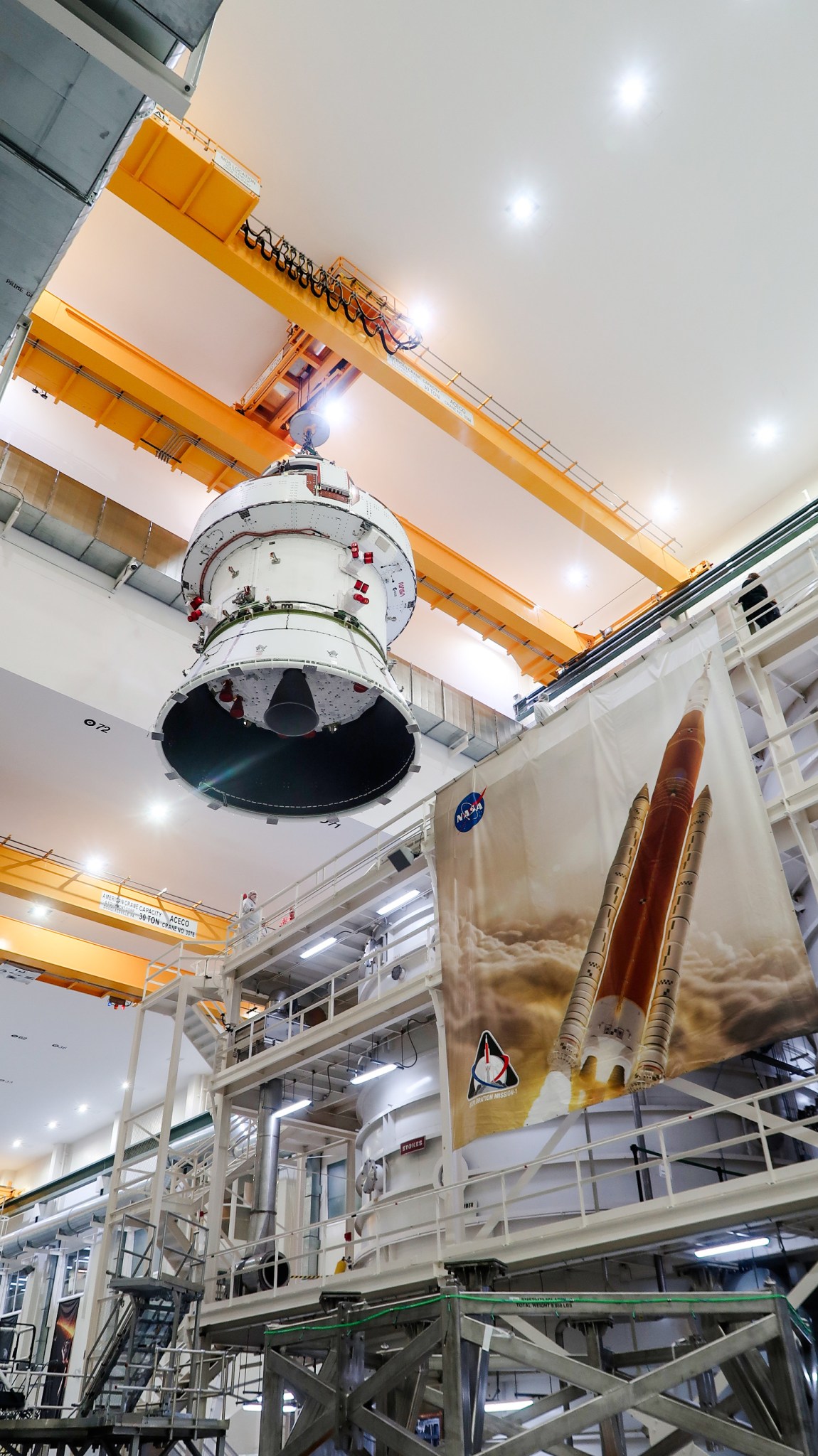
To prepare for the tests, the west altitude chamber was upgraded to test the spacecraft in a vacuum environment that simulates an altitude of up to 250,000 feet. These upgrades re-activated altitude chamber testing capabilities for the Orion spacecraft at Kennedy. Previous vacuum testing on the Orion spacecraft for Artemis I took place at NASA's Glenn Research Center. Teams also installed a 30-ton crane in the O&C to lift and lower the Orion crew and service module stack into the chamber, lift and lower the chamber's lid, and move the spacecraft across the high bay.






